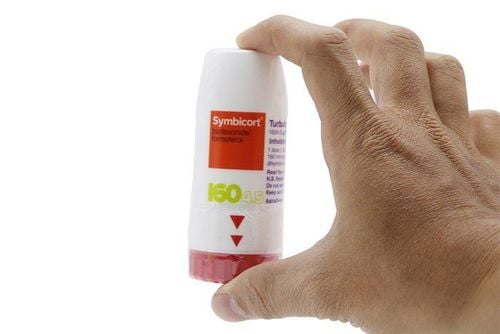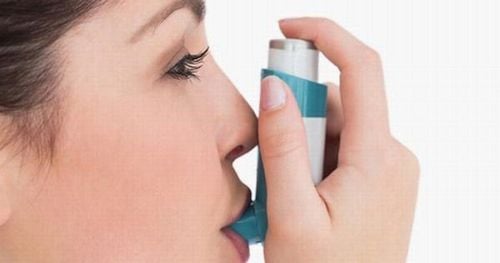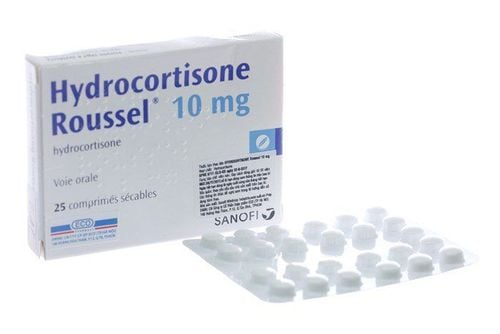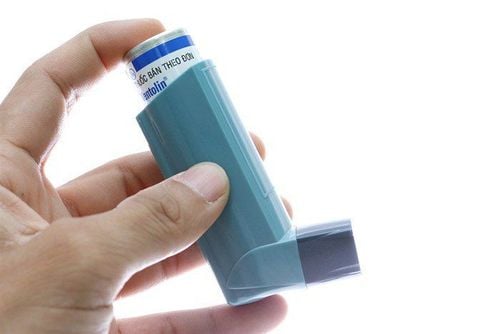This is an automatically translated article.
Acute bronchial asthma is a common disease in many people and a disease with many dangerous complications. In acute bronchial asthma, the state of quiet chest or stretched chest also has a significant impact on the patient's health. So, to better understand acute bronchial asthma as well as how to deal with it, please refer to the article below.1. What is acute bronchial asthma? Asthma diagnoses
Acute bronchial asthma is the worsening of symptoms such as dyspnea, cough, wheezing, chest tightness, stridor, and decreased lung function.The diagnoses of bronchial asthma include:
The definitive diagnosis:
Asthma is often characterized by paroxysmal episodes of dyspnea due to bronchospasm. The attack may go away on its own or due to the effects of medication.
Signs before the onset of an attack are usually: itchy throat, itchy nose, coughing attacks. When an acute bronchial attack occurs, the patient often has difficulty breathing, has to sit up to use the accessory respiratory muscles, breathes with a stork sound, and hears rales spreading throughout both lungs. An asthma attack may go away on its own, but it usually takes a bronchodilator to relieve it. When the attack is over, he will spit up clear, sticky sputum. In the absence of an asthma attack, there are no rales.
The definitive diagnosis of acute bronchial asthma is also based on personal and family history, and accompanying features during an asthma attack.
Predictors of severe acute bronchial asthma:
Previous history of severe acute asthma attacks and requiring intubation or ventilator. Have been to the emergency room at least once for acute bronchial asthma in the last 1 year. Prolonged use or abrupt discontinuation of glucocorticoids. Unable to control asthma with inhaled glucocorticoids. Dependence on fast-acting oxidizing agents, especially in people who use more than 1 spray of Salbutamol in a month. Acute bronchial asthma is often sensitive to aspirin and non-steroidal anti-inflammatory drugs. Occurrence of pneumothorax, atelectasis, pneumonia in asthma. History of food allergies, especially to peanuts (peanuts). Had to use a combination of at least 3 groups of drugs to treat acute bronchial asthma. Have mental problems or are taking sedatives. Have a history of other heart or lung disease in combination with or using beta-blockers. Previously non-compliance with treatment, refused diagnosis and treatment of acute bronchial asthma. Addiction to alcohol or are taking sedatives due to psychosis. Have a history of smoking addiction. Differential diagnosis:
Pneumothorax: This is the most important diagnosis in the diagnosis to differentiate it from an acute asthma attack. Chest pain and shortness of breath come on suddenly, whereas 80% of acute asthma attacks come on gradually within 48 hours. Signs of pneumothorax on one side of the lung (alveolar murmur reduced or absent, disproportionate distension of the chest, internal percussion). Accompanied by subcutaneous emphysema. A CT scan or chest X-ray in cases of minimal pneumothorax will confirm the diagnosis.

Tình trạng lồng ngực yên lặng hay lồng ngực giãn căng ở người hen phế quản cấp đều không tốt
Sudden onset of shortness of breath. Have a history of heart disease or high blood pressure. Presence of symptoms of cardiovascular disease (such as heart failure, high blood pressure). Pneumonia:
Auscultation of the lungs is heard with moist rales, crackles. Chest X-ray showed pneumonia. Pulmonary infarction:
Occurrence of symptoms of shortness of breath, chest pain, coughing or spitting up blood. Presence of risk factors for pulmonary infarction (prolonged immobilization, polycythemia vera). Chest X-ray showed focal opacity or lateral luminosity of the lung. Airway foreign body
History of aspiration or inhalation of foreign body. After inhaling a foreign body often appear: severe cough, acute asphyxiation. No history of acute bronchial asthma
2. Assess severity according to signs of acute bronchial asthma
The severity of an acute asthma attack is divided into two categories, based on the symptoms of the attack that divide them into:Signs of a severe asthma attack, including:
Shortness of breath, wheezing, inability to lie down to breathe (must sit forward to breathe). On auscultation, there were many crackles in the whole lung. Difficulty speaking and coughing. Mentally stimulated. Sweat a lot People bruise. Breathing rapidly, continuously more than 30 times/minute. Tachycardia, more than 120 beats per minute. Blood pressure is abnormally high or there may be signs of right-sided heart failure. Pulse inversion above 20 mmHg. If there are 4 or more signs above: then this is diagnosed as a severe asthma attack.
Signs of a critical asthma attack, including:
Has stopped breathing or slowed down to less than 10 breaths/minute. The lungs are quiet (the chest is dilated, less mobile, when listening to the lungs: alveolar murmurs decrease or even disappear). Slow heart rate, low blood pressure Consciousness is disturbed Patient has difficulty speaking or is unable to speak. When an asthma attack is accompanied by one of the above signs, the diagnosis is a critical asthma attack (pneumothorax should be excluded).

Nếu bệnh nhân bị hen phế quản cấp, lồng ngực giãn căng hãy lập tức đến ngay bệnh viện
3. Treatment of acute bronchial asthma
Depending on the severity of acute asthma, there are different management methods. After all, the following principles must be followed:For severe asthma attacks: treat with drugs first, then perform the following procedure. For a severe asthma attack, the opposite is true: perform the procedure first, treat with medication later. How to handle severe asthma attacks: Must be urgent, quick:
Give oxygen 4-8 liters/min. Using bronchodilators such as: Salbutamol or Terbutalin aerosol solution 5mg: follow the doctor's instructions. If Salbutamol or Terbutalin aerosol is not available, you can use Salbutamol with a metered dose inhaler by: Spraying the throat 2 times in a row, then breathing in deeply. If after 10 minutes there is still no relief from shortness of breath, spray your throat for another 2-4 puffs. In the first hour, you can spray 2-3 more times (2-4 puffs each time) if breathing is still difficult. If salbutamol and terbutalin are not responding or are not available, other bronchodilators can be used, such as: adrenaline (adrenalin should not be used in the elderly or people with a history of heart or coronary artery disease), high blood pressure) Aminophyllin (if the patient has never used theophylline or other Xanthin-containing drugs before, it should be used in the elderly and people with liver failure). How to manage a critical asthma attack: intervene in the airway first, then use the following medication:
Intervention on the airway must be very careful and quick. Drugs used in severe asthma attacks such as: Adrenalin: Contraindicated to use Adrenalin in patients with heart failure, coronary heart disease, high blood pressure, arrhythmia... Salbutamol or Terbutanyl or Aminophyllin intravenously and in the same dose as severe asthma. Methylprednisolone (40mg tube) or Hydrocortisone (100mg tube) for intravenous injection. Combination treatment with antibiotics, intravenous fluids... similar to severe asthma attacks. The above information is for reference only, if the patient has acute bronchial asthma or has any signs of the disease such as shortness of breath, dilated chest,... Immediately go to the hospital for directions. The best treatment should not be arbitrarily followed without instructions from the doctor.
To proactively prevent disease, customers can refer to the Asthma Screening Package of Vinmec International Hospital to help:
Screen for early detection to promptly control and treat the disease Perform clinical examination , taking medical history, measuring respiratory function, otolaryngology examination and screening for bronchial asthma.
Please dial HOTLINE for more information or register for an appointment HERE. Download MyVinmec app to make appointments faster and to manage your bookings easily.













